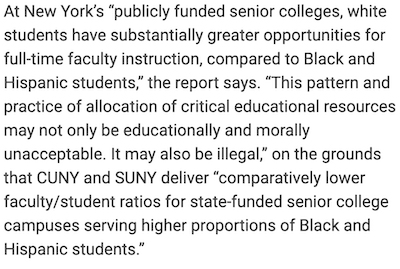Courtney Brewer
As we have all heard, enrollment and retention have become the focus of concern for our faculty and administration, and we are not in a unique position. Enrollment has declined at higher ed institutions across the country, and community colleges have been particularly hard hit. We are also dealing with a retention issue, meaning students are coming but they are not staying. In August, all were invited to a kick-off meeting on retention. Issues were explored and some of the perennial questions were raised once again, such as how do we provide targeted advising to our large General Studies population? How can we increase the use of an effective early alert system? How can we promote a one-college model that would benefit students by providing a more uniform experience? All of these are important questions and many suggestions were put forth, with several coming from our counselors in attendance. As a follow up to the initial meeting, administration hosted three retention workshops this past semester, focusing on advising, placement and the use of early alert. Attendance was mixed, with most of the non-administrative attendees being counselors. Classroom faculty did not seem to be as engaged in these conversations, but as the number of students drops, classroom faculty are and will be feeling the crunch as sections shrink. Retention is indeed a concern for each and every one of us, not a select few who work in student services. We are seeing more full-time faculty being unable to make regular load at their home campus, a situation that was once extremely rare. Meeting students where they are Placement issues seem to be a particular concern among many as of late, with teaching faculty finding students in their classrooms who seem less prepared than ever to take on the standard assignments faculty have been using. We know that incoming high school students had their education disrupted by the pandemic, and much of the junior and senior level learning experiences students once benefitted from were simply gone. Many classroom faculty are sharing their students’ frustration at not being able to perform in their classes due to a weakness in fundamental reading, writing and mathematical skills. At the same time, we are, along with many other community colleges, shifting away from the student placement test model and the use of developmental courses. The use of more holistic student assessments has been cited as a preferable practice, but we also know that many high school students are graduating with grades and GPAs that are grossly inflated and not a good indicator of their actual college readiness. Placing students into courses that they are not prepared for is certainly not a way to increase retention, as those students often disappear within a few weeks or stick it out and receive failing grades. Early alert has proven useful in keeping students informed about their progress in a course, and we have seen that the use of early alert improves student outcomes in that course, but no amount of warning can help a student who is simply incapable of keeping up with a college-level course if they are not prepared for college-level work. Additional resources need to be provided. We have seen the research that developmental courses become an inescapable hole out of which the majority of students cannot climb, robbing them of motivation to persist. One solution that we know can work is the use of the co-requisite model. We already make use of this model so it is not a new solution, but there does not seem to be a significant increase in the number of co-requisite courses being offered while there is a very clear decrease in the number of developmental sections. Dual credit concerns
Where are the underprepared students going? Many of them may not actually be going into any courses offered at the college. Instead, they are gaining college credits while in high school through the Beacon program, where they take “SCCC” courses taught by their high school teachers. Unfortunately, according to college administration, this program’s enrollment has soared—with more than 350 courses serving over 6,000 students last semester (this, even as some faculty cannot make full load on their home campus). The expansion of this program has seen very little accompanying oversight by the college. High school students are earning rather impressive grades in courses, some of which are upper-level and very challenging when offered on campus, but which seem a breeze for so many juniors and even sophomores. Sound suspicious? That’s because it is. SCCC is not unique in being lured by the dollar signs into expanding their dual credit programs, but at what cost? Administration has allowed the Beacon program to explode because it is simply a very attractive source of tuition dollars, without the bothersome cost of having to pay a faculty member to teach the courses. And the real kicker is that only 6% of Beacon students actually go on to attend SCCC. To their credit, we have received a commitment from the current administration to provide more oversight of the Beacon program moving forward. At the same time, we are hearing very concerning comments about the goal of having high school students enroll at SCCC with as many as 30 credits under their belt. If the most important goal is to grab as many tuition dollars as possible without having to pay faculty who are actually qualified to teach the courses—and not worry at all about the quality of the education students with SCCC course on their transcript have received—it makes perfect sense. However, it's not at all clear how further expansion of the Beacon program and becoming a one-year institution could possibly help with retention or enrollment. Other factors, from food to full-time faculty Retention is also tied to other issues, not covered in the workshops, that are likely important factors for students and families yet are not being touted as crucial in the retention conversation. These include classrooms and offices that have adequate climate control and are not stiflingly hot when students arrive in September, with A/C systems that have not worked properly year after year (after year) since being installed. They include campuses that look well tended, without overgrown weeds pushing up through walkways and sidewalks and sprouting out of gutters on buildings when families come for tours. They definitely include access to a campus cafeteria, where students can get food and caffeine and congregate. Any student who has ever pictured themselves attending college likely has had a vision of the bustling student center, where they can grab some pizza and hang out with their friends, but not so for students on the Eastern Campus for the entire fall semester. Properly stocked food pantries have also become a necessity on our campuses. These issues have not been created by people in facilities, plant operations or food service positions not doing their jobs; they have been created through the lack of backfilling vacant positions in a timely manner or not filling them at all. While making the investments to hire much needed help in these areas or replace systems that simply don’t work may be seen as impossibly expensive, there is truth to the notion that sometimes you have to spend money to make money. And, of course, any effort to increase retention must include students having more access to full-time faculty, who are able to hold office hours and provide vital connections that keep students engaged, not the widespread adjunctification of our faculty that has been going on for years and has been publicly cited as an intentional cost-savings strategy by the college. When students don’t connect to faculty, they don’t stay. We have phenomenal adjuncts at this college, but they are often not able to stay late or come in early to meet with students to provide support and they are often not fully aware of the various policies, procedures, and resources that exist. Advising was one of the main points stressed in the retention workshops. Full-time faculty are needed to advise students in a meaningful way. While many of our highly involved full-time faculty are stretched very thin, assessment, governance and committee work are important pieces of the overall quality of education students can expect to receive while at SCCC. We see the same few familiar faces over and over again, taking on the extra work that is needed. These folks are getting tired. We are in the process of revising a very large number of program and course learning outcomes in order to meet changes in SUNY learning areas; assessment is going to be the only way to know if those outcomes are being delivered. More full-time faculty and a reinvestment in assessment are needed to ensure outcomes are both up to date and being met, especially in departments where there is only one full-time faculty member. Solution suggestions
The solutions to our retention problem are not simple and they are probably not inexpensive; there are multiple pathways from which the issue needs to be addressed if it is to be done with a commitment to ensuring there is quality in the product we are offering. In any business model, the bottom line is the ultimate guiding force behind decisions and we recognize that, at the end of the day, the college still has to meet its many expenses. The product in this case of a community college, of course, is not widgets or doorbells. We are encouraged by the increase in full-time lines being posted in recent months, and we hope the trend continues in the direction of replacing lost classroom lines as well. Yet even as our enrollment has steadily declined over the past six years, our administrative structure has grown. While it may take time to fully realize the best approaches to improving retention, the answer certainly does not lie in a larger, more complex and expensive administrative structure than the one we already have across three very different campuses. The FA will continue to advocate for a reorganization plan that can be approached with improved enrollment and retention in mind and that will bring us closer to a one-college model, while filling the gaps in areas that will actually impact students in a meaningful way. |

